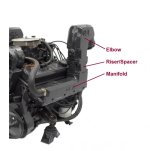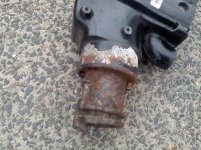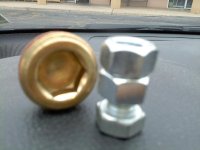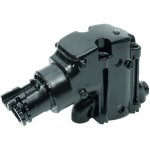luvmystang67
New member
Hey Team,
I looked through threads and couldn't really find what I wanted. Boat is a 1989 Sea Ray Sundancer, engine is a 5.7 mercruiser carbed engine. Its a replacement engine as of 2009, but I assume it is a rebuilt version of the same 1989 motor. I have a closed cooling system (freshwater cooled, or whatever you say for cooling that has an antifreeze system). I know enough to know that my risers are raw water cooled while my manifolds are freshwater/antifreeze cooled. I want to buy parts before I take it apart, just because I don't want it to be sitting in the water with the risers off and raw water hoses out for any longer than it has to.
So my question is, do I need a solid stainless steel blockoff plate with this? If the engine was new 7 years ago, I assume that is realistically the last time risers were replaced. It has probably 200 hours on the new engine, virtually all salt. I want to change the risers just so I know I'm starting on a clean slate with it. I bought it last year. My question, when I'm buying parts, is do I need a stainless steel block-off plate between the risers and the manifold or will a gasket do here. It doesn't seem like there are many stainless blockoff plates available, which leads me to believe that many people just used some kind of gasket to do the blocking the the past. Intuitively that doesn't seem sufficient to me and I assume I need a blockoff plate (with a total of 2 gaskets per riser). Is this right? It doesn't look like there's a blockoff plate sandwiched in there now, but its difficult to tell. Am I missing something here? Is there always a metal blockoff plate in a freshwater cooled system or do people just use some kind of reinforced gasket in there?
Also, do I add any RTF type sealant or just do this installation dry? Does the bolt grade matter like it does on heads?
Thanks,
Stang
I looked through threads and couldn't really find what I wanted. Boat is a 1989 Sea Ray Sundancer, engine is a 5.7 mercruiser carbed engine. Its a replacement engine as of 2009, but I assume it is a rebuilt version of the same 1989 motor. I have a closed cooling system (freshwater cooled, or whatever you say for cooling that has an antifreeze system). I know enough to know that my risers are raw water cooled while my manifolds are freshwater/antifreeze cooled. I want to buy parts before I take it apart, just because I don't want it to be sitting in the water with the risers off and raw water hoses out for any longer than it has to.
So my question is, do I need a solid stainless steel blockoff plate with this? If the engine was new 7 years ago, I assume that is realistically the last time risers were replaced. It has probably 200 hours on the new engine, virtually all salt. I want to change the risers just so I know I'm starting on a clean slate with it. I bought it last year. My question, when I'm buying parts, is do I need a stainless steel block-off plate between the risers and the manifold or will a gasket do here. It doesn't seem like there are many stainless blockoff plates available, which leads me to believe that many people just used some kind of gasket to do the blocking the the past. Intuitively that doesn't seem sufficient to me and I assume I need a blockoff plate (with a total of 2 gaskets per riser). Is this right? It doesn't look like there's a blockoff plate sandwiched in there now, but its difficult to tell. Am I missing something here? Is there always a metal blockoff plate in a freshwater cooled system or do people just use some kind of reinforced gasket in there?
Also, do I add any RTF type sealant or just do this installation dry? Does the bolt grade matter like it does on heads?
Thanks,
Stang





